
As the upcoming Royal & Noble Jewels auction at Sotheby’s draws closer, my exploration of the stories behind some of the fabulous pieces in the sale continues today with a look at a special bracelet that belonged to a remarkable French princess.
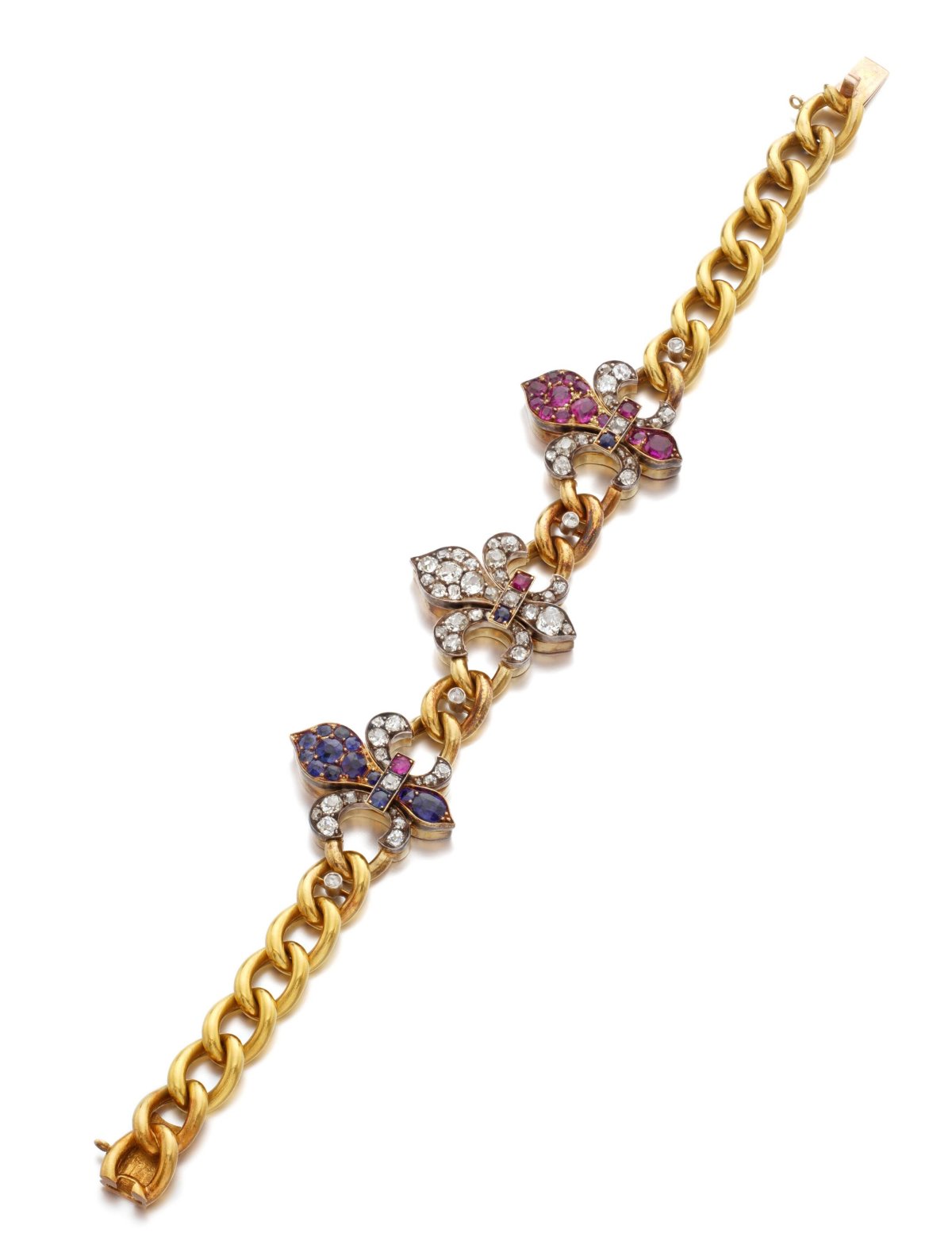
The bracelet, with its distinctive yellow gold chain construction, was reportedly made around 1880. The lot notes provided by Sotheby’s describe the jewel as “centering three fleur-de-lys motifs set with cushion-shaped, oval and circular-cut rubies and sapphires, accented by old cushion-shaped diamonds, on a polished gold curb-link chain.”
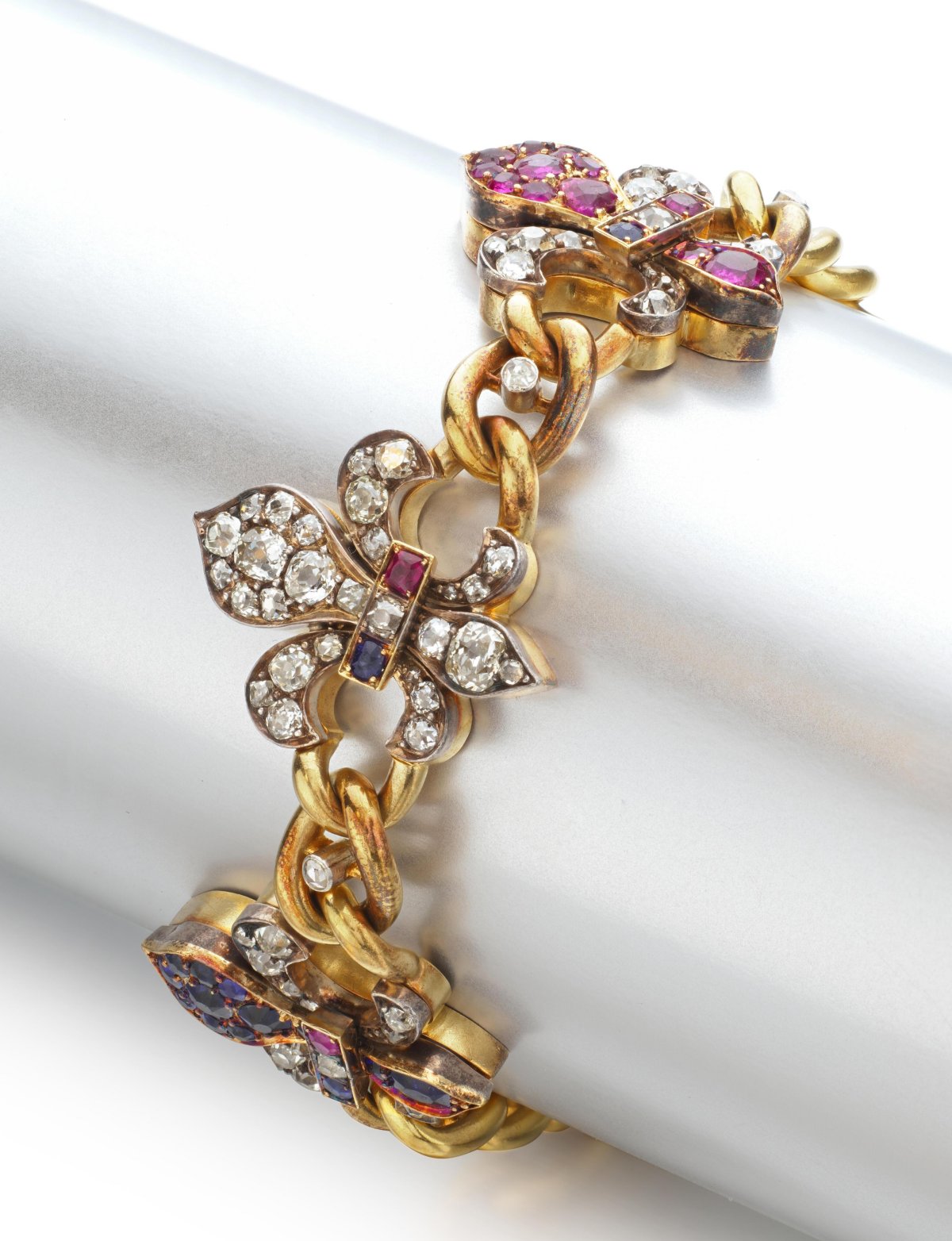
The fleur-de-lis symbol integrated into the bracelet, and the blue, white, and red colors of the gemstones in the piece, both gesture toward the jewel’s original owner: a French royal princess. The fleur-de-lis is a classic symbol of the House of Bourbon, the dynasty that reigned in France from the medieval period until the nineteenth century, and the colors are those of the French tricolore flag, which was used first by revolutionaries in the 18th century and then also later by royalists and republicans alike during the reign of the last Bourbon monarch, King Louis Philippe of the French.

Here’s an image, provided by Sotheby’s, that shows the scale of the bracelet when worn by a model. Though it is so connected to French royal history, the piece was actually made after the monarchy was permanently abolished. Sotheby’s dates its construction to 1880. A fitted box that accompanies the piece is stamped with the name of its supposed maker, J.&P. Bapst & Fils. By the late nineteenth-century, the family of jewelers from Alsace had been linked to the French royal family for generations. Georges-Michel Bapst was appointed as the royal goldsmith and jeweler to King Louis XV in 1752. His son, Georges-Frédéric, succeeded to the same post in 1771 after his father’s death. He was involved in the creation of several significant pieces of royal jewelry, including pieces made for Marie Antoinette.
The Bonapartes who catapulted onto the French throne after the revolution preferred to work with jewelers from the Nitot family, but after the Bourbon restoration in 1815, Maison Bapst rose to prominence again. Georges-Frédéric’s first cousin, Jacques Evérard, was appointed court jeweler to King Louis XVIII. He likely had a hand in some of the grand pieces made for the Duchess of Angoulême, including her fabulous emerald tiara. His sons, Constant and Charles, made coronation regalia for King Charles X in 1824, working under the name Bapst Frères. The family business continued to be handed down through generations of sons and cousins. By 1880, when this bracelet is said to have been made by the firm, it was being run by Jules and Paul Bapst, grandsons of Jacques Evérard, from No. 25 Rue du Faubourg-Saint-Honoré. Later, the same mansion would be the Parisian home of the Princes of Monaco.
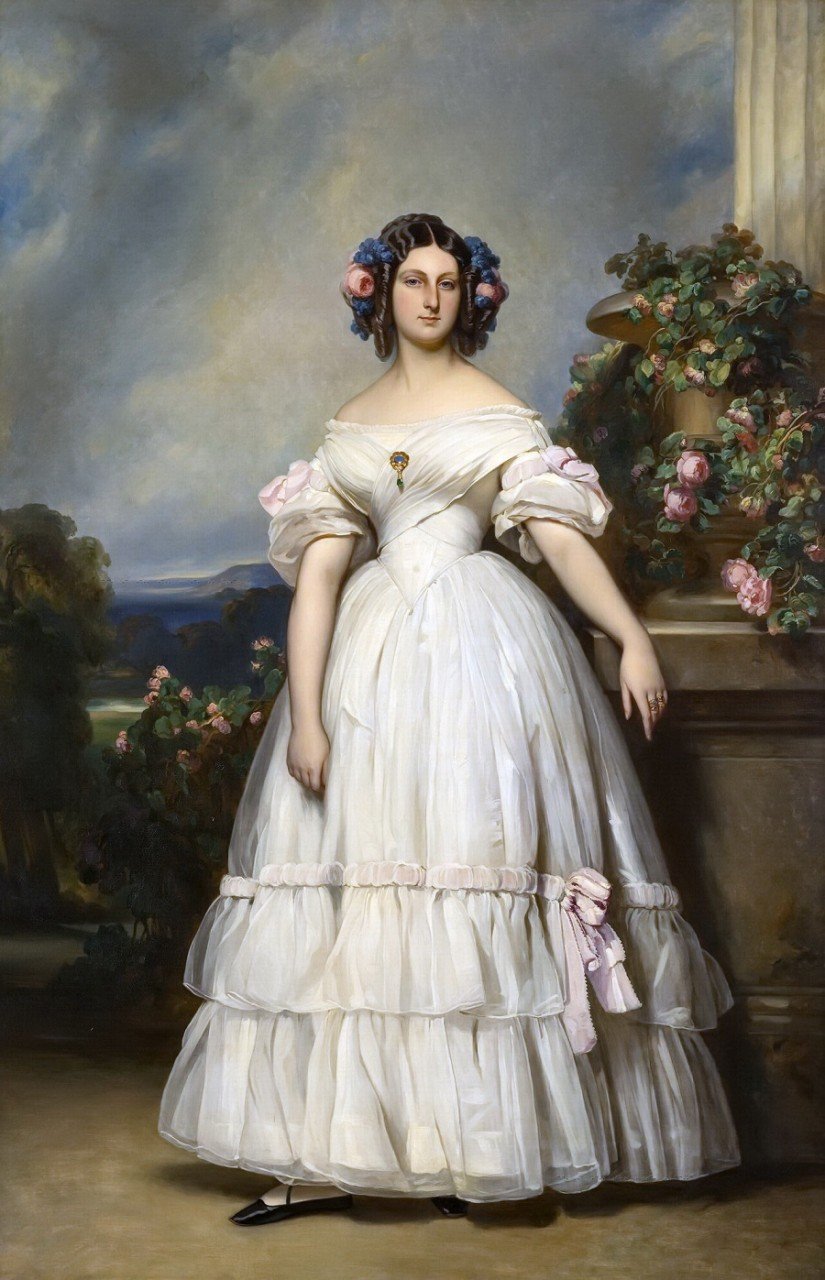
By the time that Jules and Paul Bapst were running their branch of the family business in Paris, there were no more kings or emperors on the French throne. King Louis Philippe, the last Bourbon monarch, had been ousted and exiled in 1848, and Emperor Napoleon III, the last Bonaparte monarch, had been knocked off his throne in 1870. But there were still plenty of former French royals milling about in Europe. Among them was Princess Clémentine of Orléans, Louis-Philippe’s youngest daughter. Reputedly one of the shrewdest and most ambitious members of her family, Clémentine spent her life working to reclaim her father’s heritage and to secure and promote the prospects of her own children.
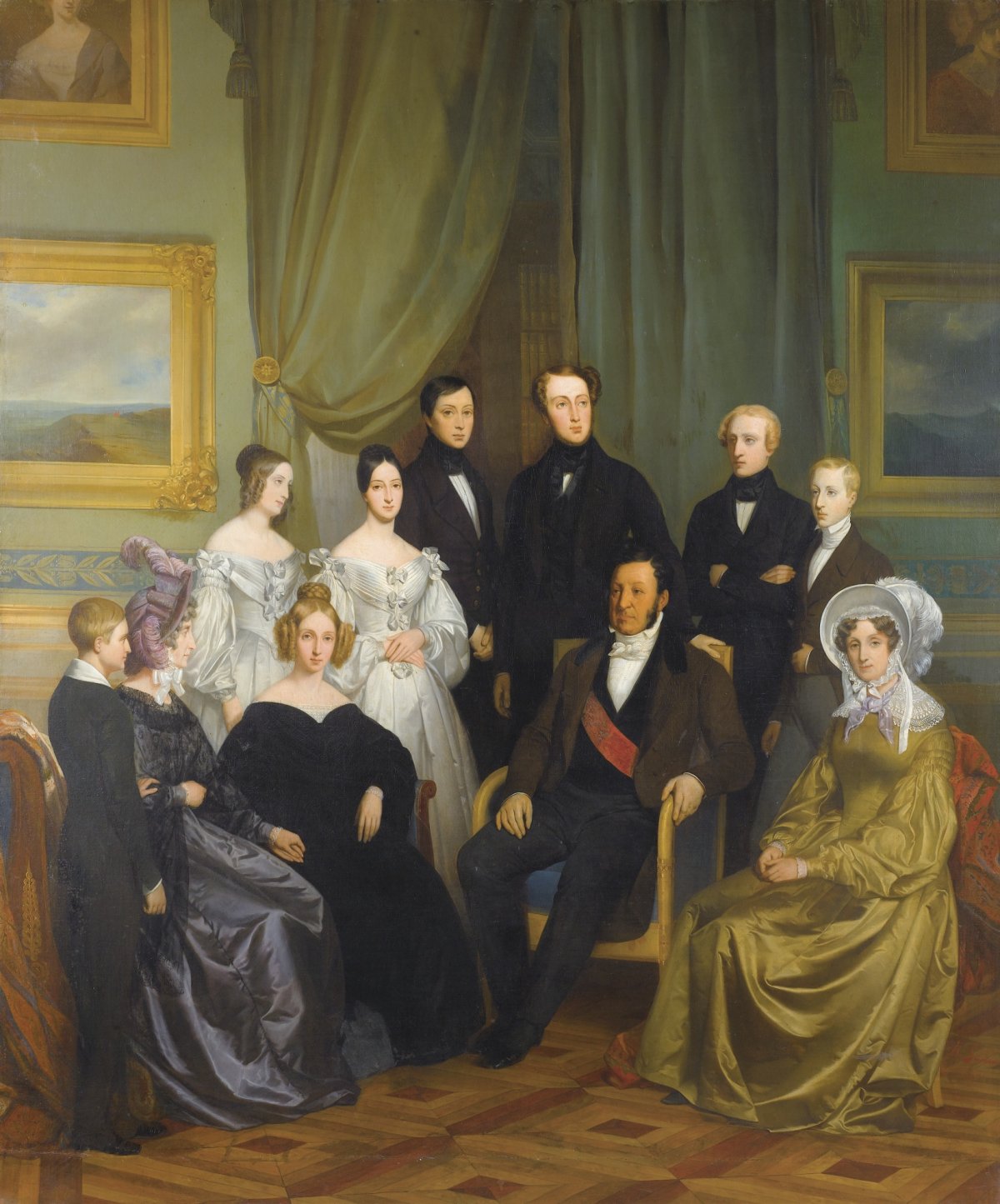
Born in Paris in 1817, Princess Clémentine was the sixth child of Louis Philippe of Orléans and Maria Amalia of Naples and Sicily. Her father was a son of Louis Philippe II, Duke of Orléans, a member of a cadet branch of the royal family and a cousin of King Louis XVI. Through her mother, she was a descendant of royal families from Austria and Italy. Her grandmother, Maria Carolina of Austria, was a sister of Marie Antoinette. Clémentine was born just a few years after the Bourbon restoration had placed King Louis XVIII on the French throne. She was thirteen when the July Revolution of 1830 placed her father on the throne as King Louis Philippe of the French, making her a royal princess.
Above, Clémentine is depicted in a portrait of Louis Philippe’s royal family, painted in the 1830s by the Dutch artist Henri Scheffer. King Louis Philippe, wearing the red sash of the Legion d’Honneur, sits in the center of the group. On his left, in gold, is his sister and advisor, Madame Adélaïde. Also seated are his wife, Queen Maria Amalia (wearing purple) and their eldest daughter, Queen Louise (wearing black), who was married to King Leopold I of the Belgians. (I think it’s possible that she is depicted in mourning attire following the death of her first son, Crown Prince Louis-Philippe, in 1834, which would suggest a date for the painting.) Standing at left is the Duke of Montpensier, the youngest of King Louis Philippe and Queen Maria Amalia’s children. Standing in the back row, from left to right, are their remaining six surviving children: Princess Clémentine, Princess Marie (later Duchess of Württemberg), the Prince of Joinville, the Prince Royal (the eldest son and heir to the throne), the Duke of Nemours, and the Duke of Aumale.
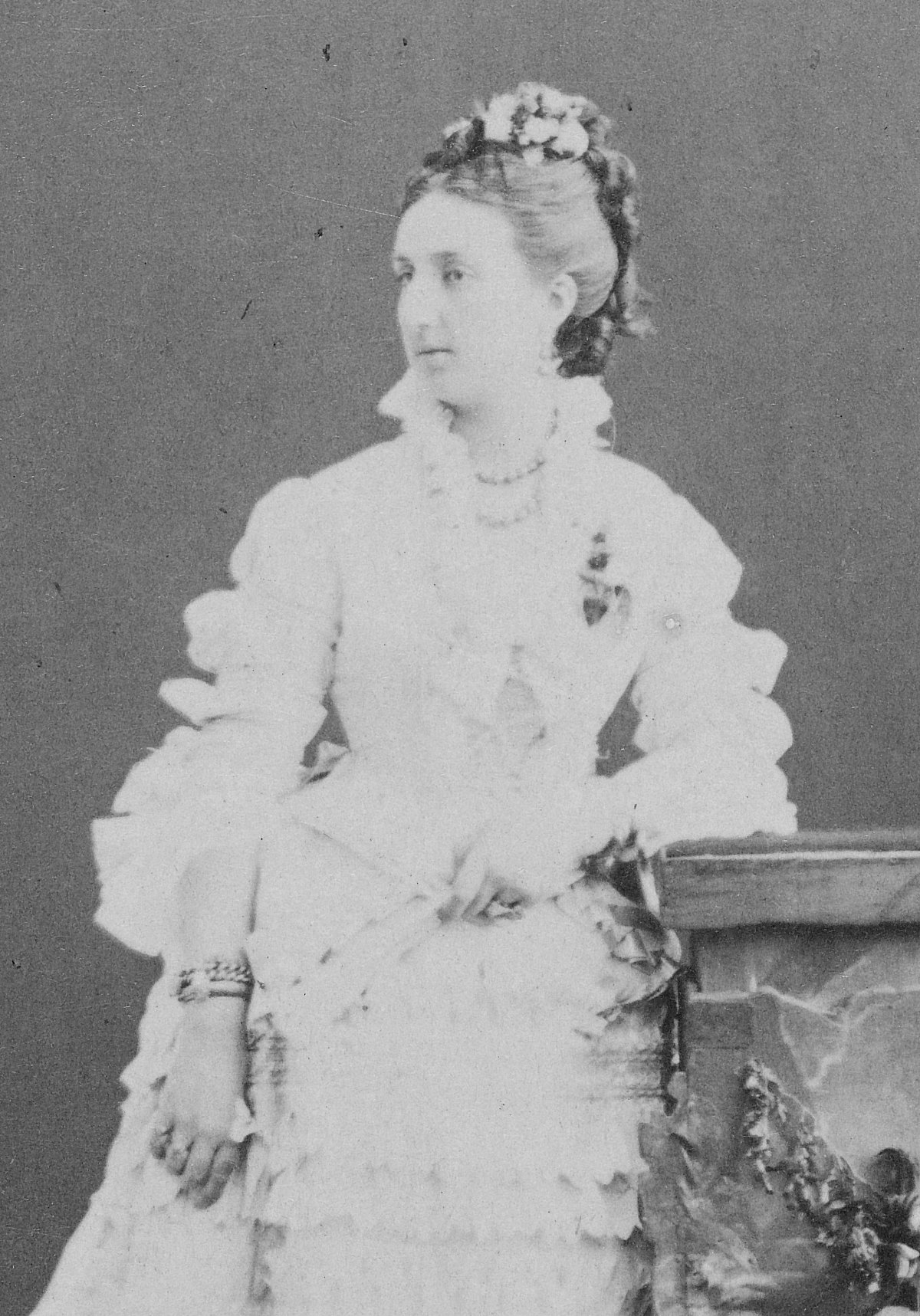
Clever and beautiful–and the daughter of a reigning monarch–Clémentine was a sought-after royal bride. Her brother-in-law, King Leopold of the Belgians, helped to arrange a marriage that kept her close to his own extended family. In 1843, Clémentine married Prince August of Saxe-Coburg and Gotha, Leopold’s nephew. August, incidentally, was already enmeshed in the French royal family, because his sister, Princess Victoria of Saxe-Coburg and Gotha, had married Clémentine’s brother, the Duke of Nemours, three years earlier.
August was a nephew of the King of the Belgians, a brother-in-law of the Queen of Portugal, and a first cousin of both Queen Victoria and Prince Albert of the United Kingdom. Through his mother, a Hungarian aristocrat, August also inherited one of the largest estates in that country, bringing significant wealth to his marriage. After their wedding at the Château de Saint-Cloud near Paris, August and Clémentine divided their time between the Palais Coburg in Vienna and various royal residences in her native France. They quickly became parents of four children in five years: Prince Philipp, Prince Ludwig August, Princess Clotilde, and Princess Amalie.
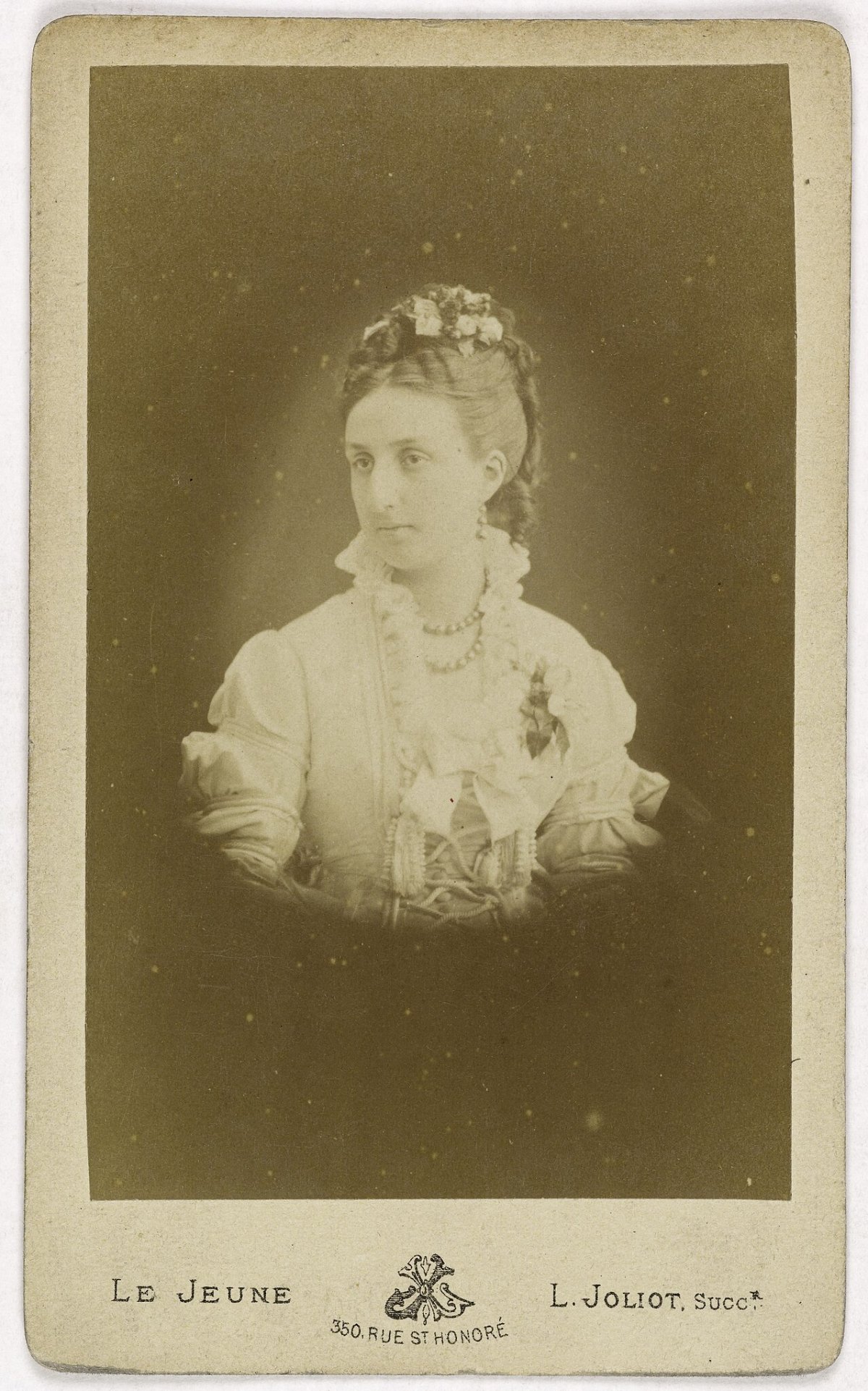
While her first three children were born in France, Princess Clémentine’s younger daughter, Amalie, was born in Coburg in October 1848. Eight months earlier, in February 1848, Clémentine’s father had abdicated in the wake of another revolution in Paris. After sending their children out of the country, Clémentine and August accompanied her father from Versailles to England, where he would spend his final years at Claremont, the country home owned by his son-in-law, King Leopold.
With steely determination, Clémentine would serve as a crucial support for her family in exile as they endured the deaths of both her father, King Louis-Philippe, and her sister, Queen Louise, in 1850, and her father-in-law, Prince Ferdinand of Saxe-Coburg and Gotha, in 1851. She remained a central part of the extended family circle that still occupied Buckingham Palace and the Royal Palace in Brussels, and she campaigned regularly to try to recoup the family properties and assets that had been confiscated by Louis Napoleon Bonaparte’s government in 1852, including the château that she and August had received as a wedding present. She was a regular visitor to her mother in England, and she was present for important family moments like the wedding of her niece, Prince Charlotte of Belgium, to Archduke Ferdinand Maximilian of Austria, in Brussels in 1857. (They’re better known to history as Emperor Maximilian and Empress Carlota of Mexico.)
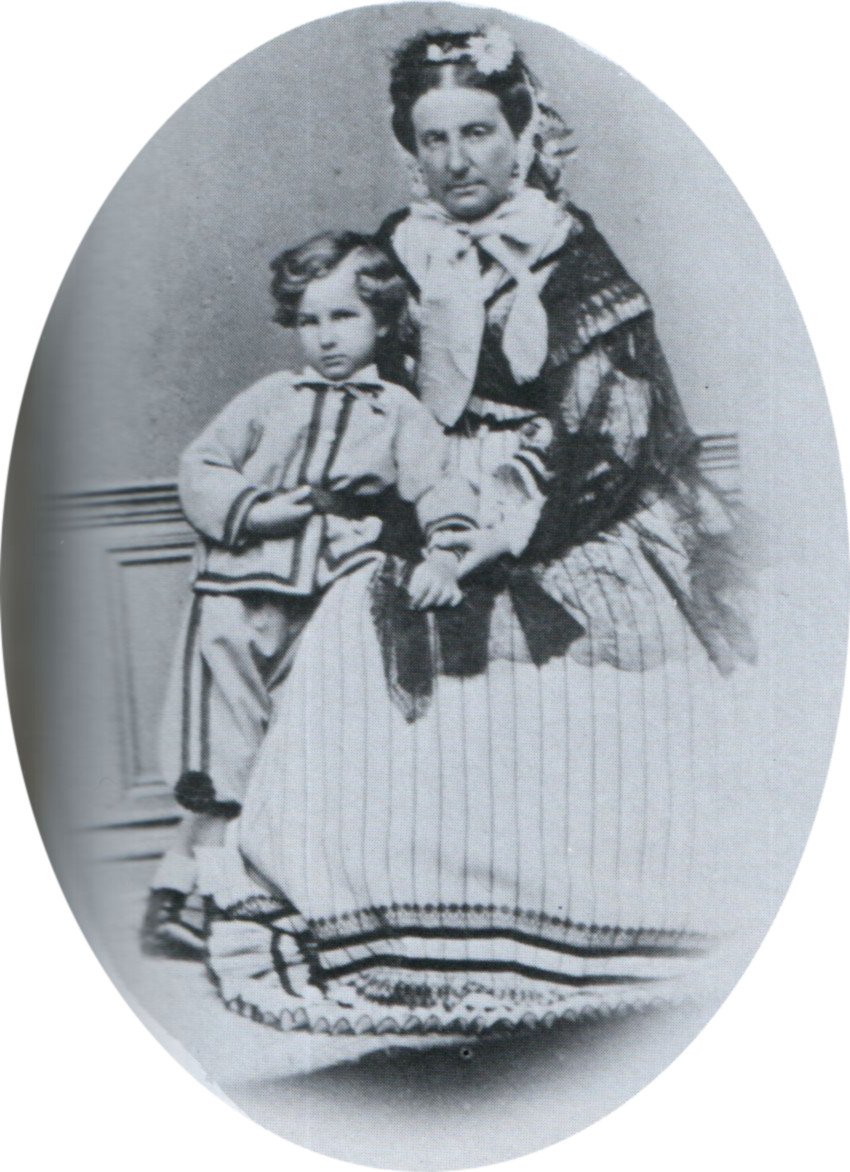
In 1860, not long after celebrating her 43rd birthday, Princess Clémentine was undoubtedly surprised to learn that she was expecting a baby. It had been twelve years since the birth of her last child. She gave birth to a baby boy in Vienna on February 26, 1861. He was baptized Ferdinand Maximilian Karl Leopold Maria, the first two names bestowed in honor of his godfather, Archduke Ferdinand Maximilian of Austria. Princess Clémentine doted on her youngest son, and she nurtured hopes that he and his brothers would find their way toward restoring the glory of their grandfather. In 1863, August and Clémentine’s sons were mentioned among those who could be connected to the throne of Greece.
To bolster the family’s already-impressive royal connections, Clémentine worked to secure brilliant marriages for all of her children. In the spring of 1864, Princess Clothilde married Archduke Joseph Karl of Austria, whose sister, Marie Henriette, was married to Clémentine’s nephew, Crown Prince Leopold of Belgium. Later the same year, Prince Ludwig August traveled to Brazil, where he married Princess Leopoldina, daughter of Emperor Pedro II. A decade later, two more marriages cemented the family connections. Prince Philipp married his cousin, Princess Louise of Belgium, in 1875, a union that proved to be uniquely disastrous. Seven months later, Princess Amalie married Duke Maximilian Emanuel in Bavaria, a younger brother of Empress Elisabeth of Austria.

But Clémentine wasn’t satisfied simply with marrying her children into prominent royal families. She had greater ambitions, which she focused on her youngest son, Prince Ferdinand. In 1886, when he was serving as an officer in the Austro-Hungarian army, 25-year-old Ferdinand’s name began to be included in a list of candidates for the newly-vacant Bulgarian throne. Now a widow, Clémentine worked extensively behind the scenes to promote her son for the role. She lobbied Emperor Alexander III of Russia to recognize Ferdinand’s candidacy, a crucial connection needed to cement his fitness for the job.
By the summer, Ferdinand had officially been elected to serve as Prince of Bulgaria. He traveled to Sofia to take up his new role, and his mother followed a few months later. There, she served as one of his most important advisors. British papers noted that “the arrival of that ambitious and courageous lady would certainly have served to import fresh backbone into Prince Ferdinand’s adventure.” Indeed, at times Clémentine’s ambitions got the best of her, and she was at times implicated in diplomatic subterfuge related to her son’s new princely role. But she also provided an important source of financial support, funneling significant funds from her own enormous personal wealth toward Bulgarian interests.
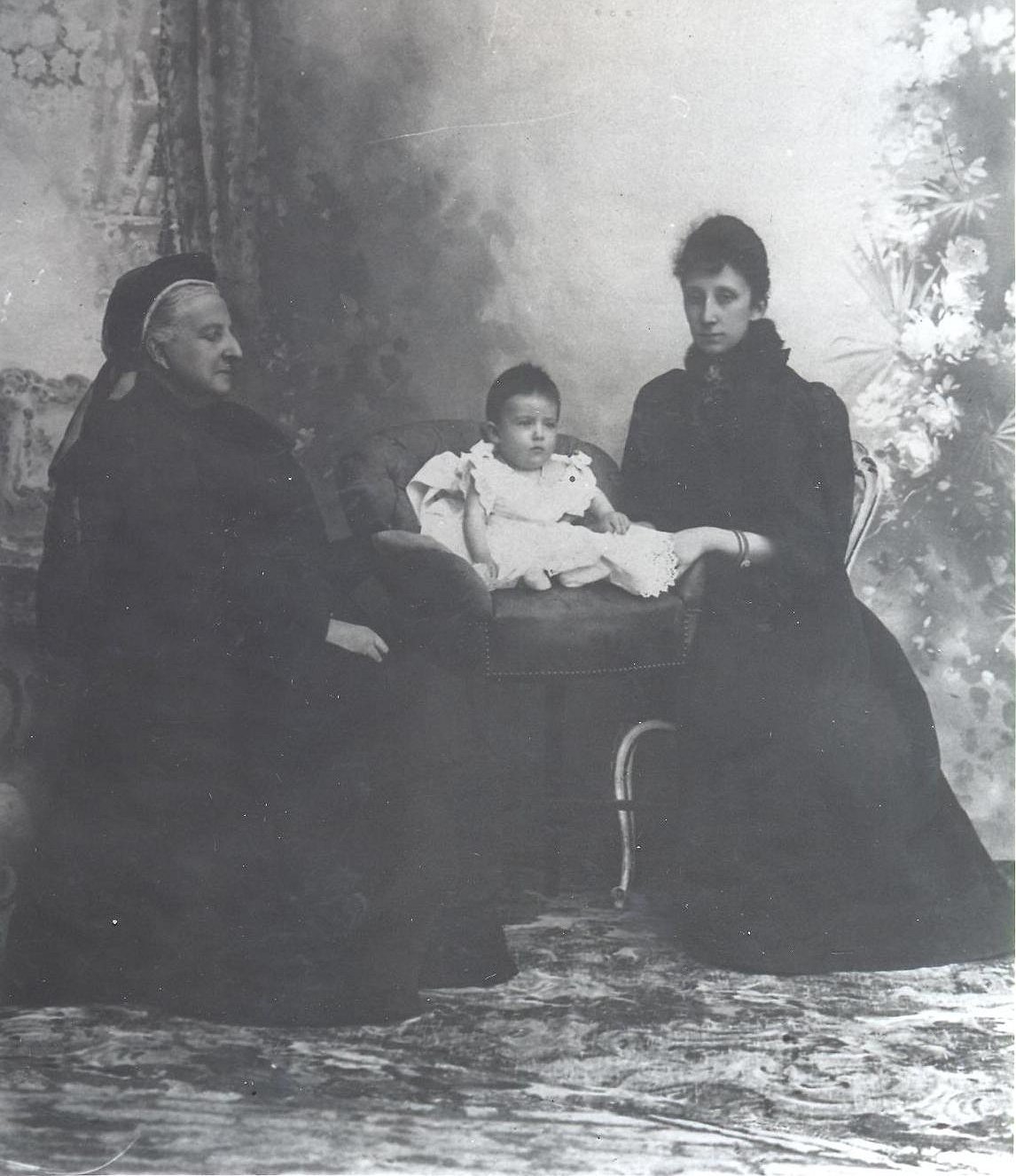
Sensitive to the fact that her son needed an heir, Clémentine soon turned her energy toward arranging a marriage for Ferdinand and an eligible European princess. She landed on Princess Marie Louise of Bourbon-Parma, the eldest daughter of Robert, Duke of Parma and his first wife, Princess Maria Pia of Bourbon-Two Sicilies. Ferdinand married Marie Louise at the Duke’s home, Villa Pianore, in 1893. Nine months later, an heir was born: a baby boy who was christened Boris Clement Robert Mary Pius Louis Stanislaus Xavier, with names that paid tribute to the grandparents, Clémentine and Robert, who engineered his parents’ marriage.
Three more children followed, and an exhausted Marie Louise died of pneumonia shortly after giving birth to her fourth child in 1899. Clémentine remained an important fixture in the family home, guiding her son politically and helping him raise his children. In 1895, British papers published articles lauding her competence: “Although several years older than Queen Victoria, Princess Clementine, mother of Prince Ferdinand of Bulgaria, is still very alert and very active. Nothing seems to fatigue her.” Indeed, she lived to the advanced age of 89, dying rather suddenly in Vienna in 1907.
An obituary published in the Graphic hailed her as “a genius” and “the last of the women politicians of the old school,” noting, “Her cleverest feat was the piloting of her son Ferdinand to the throne–shaky as it might be–of Bulgaria. It was really her work that he was elected to the throne in 1887, and it was certainly her statecraft which kept him there. She twisted everybody round her little finger; she was cleverer than a world of politicians and diplomats; her tact, her judgment, her powers of suasion, her money, made her an extraordinary force in the inner circle of European politics; and she used them to perfection.”
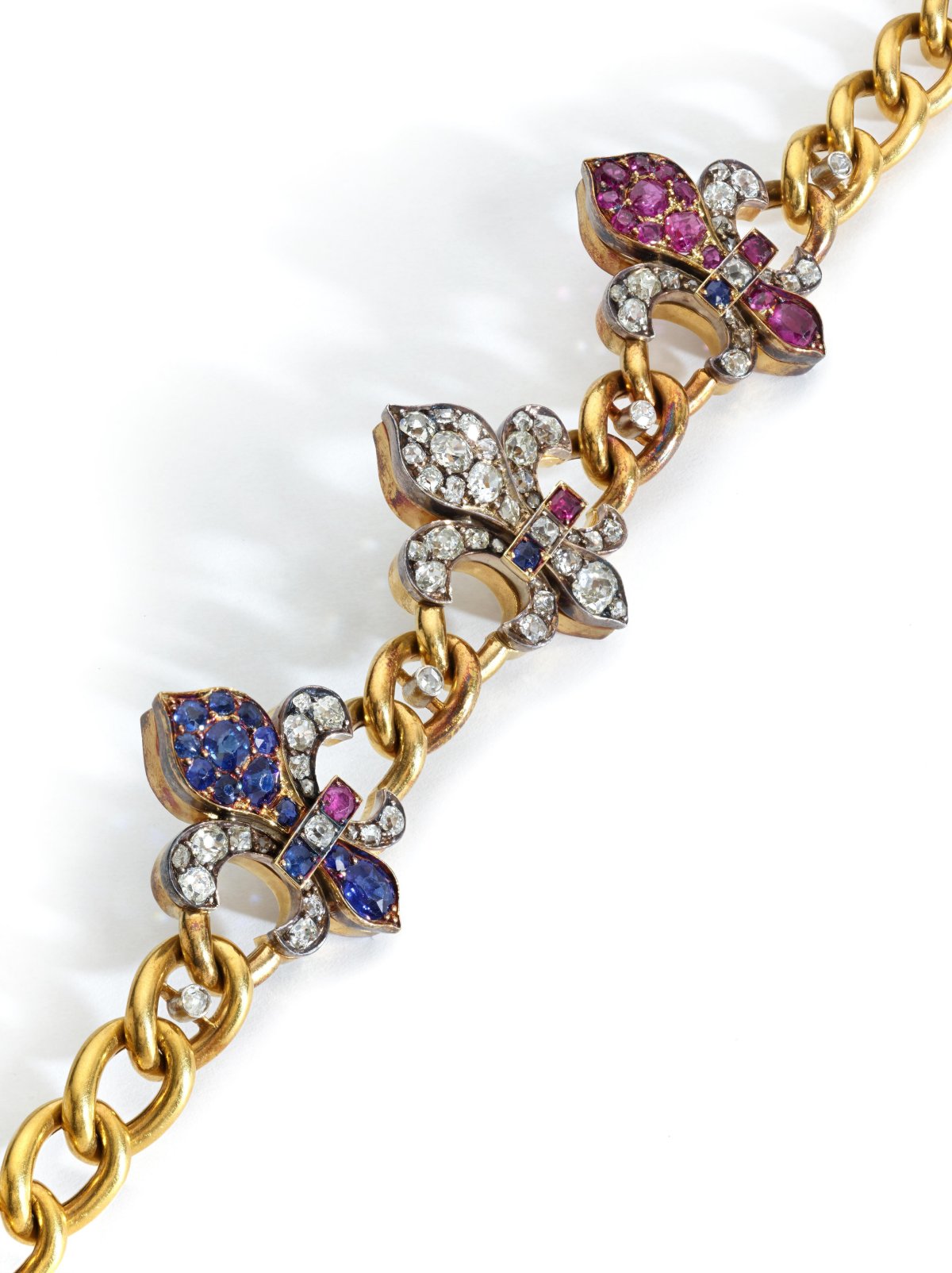
Princess Clémentine’s fortune helped her to maintain an impressive personal jewelry collection even as she lavished gifts on her family members. The fleur-de-lis bracelet, made as a reminder of her father’s reign and her own exalted heritage, apparently stayed with her until her passing in 1907, and since then it has presumably remained with her descendants. Next week, prospective buyers will have the chance to bid on the jewel at Sotheby’s in Geneva. Auction estimates for the lot are currently set at 26,000-42,000 Swiss francs, or around $30,000-49,000 USD.
Leave a Reply
You must be logged in to post a comment.